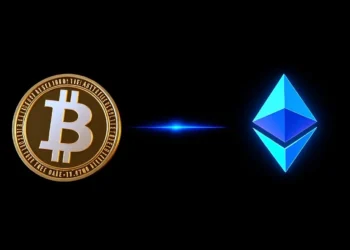Introduction
Blockchain technology is shaking up many industries, especially healthcare. Its ability to protect data, improve sharing, and cut costs is making waves. But why does healthcare need help? Current systems face serious issues—data breaches, hard-to-share records, and wasted resources. These problems hurt patient care and slow down progress. That’s why exploring blockchain’s potential is urgent. When used right, it can make healthcare more secure, transparent, and efficient.
The Role of Blockchain in Securing Healthcare Data
Ensuring Data Privacy and Security
Blockchain offers strong protection for sensitive health data. Its cryptographic features make hacking nearly impossible. Plus, the system stores data across multiple locations, so there’s no single point of failure. This makes data breaches less likely. Regulations like HIPAA require strict data safeguards. Blockchain aligns with these rules by offering secure, transparent ways to handle health information.
Data Ownership and Patient Consent
Patients should control their own health info. With blockchain, they can. Patients can decide who access their data and when. Smart contracts automate consent, giving full control to users. For example, MIT’s MedRec project showed how blockchain can make patients owners of their health records. Patients can share or revoke access with a few clicks.
Reducing Data Breaches and Fraud
Data breaches in healthcare cost billions and damage trust. Blockchain makes it hard for cybercriminals to alter records because of its unchangeable ledger. Some hospitals already avoided major breaches thanks to blockchain’s features. It also helps prevent fraud, like fake claims or unauthorized data access. Transparency creates a safer environment for everyone.
Enhancing Interoperability and Data Sharing
Streamlining Health Record Exchange
Today, sharing health records is a nightmare. Different hospitals and clinics use incompatible systems. Blockchain can fix this by creating a single, trustworthy system for records. This means real-time updates and instant access to the latest data. Patients and doctors no longer have to wait days for test results.
Facilitating Collaborative Care
When healthcare providers share data securely, patient care improves. Blockchain makes it easy for doctors, labs, and specialists to collaborate. For example, a patient’s allergies and treatments can be shared instantly between hospitals. This leads to faster, more coordinated care.
Overcoming Legacy System Limitations
Many existing electronic health record (EHR) systems aren’t built for sharing. They’re outdated and siloed. Blockchain offers a flexible way to connect these systems. It acts as a bridge, making data flow smoothly across platforms. This can reduce errors and save time during patient visits.
Supply Chain Management and Drug Traceability
Ensuring Authenticity of Medications
Fake drugs flood markets worldwide. Blockchain can verify the origin of medicines. Each step of a drug’s journey—from factory to pharmacy—gets recorded. Consumers and providers can confirm drugs are safe and genuine. This fight against counterfeits saves lives and money.
Tracking the Drug Lifecycle
Blockchain keeps a detailed history of each drug. It records manufacturing, shipping, storage, and dispensation. Pfizer and SAP teamed up to manage vaccine supply chains using blockchain. This way, every vial can be tracked for safety and quality assurance.
Reducing Waste and Fraud
Supply chain transparency cuts waste. It prevents theft, spoilage, and counterfeiting. Better records mean less wasted money and time. Regulatory bodies also prefer blockchain because it makes audits quick and clear.
Clinical Trials and Research Integrity
Improving Data Transparency and Traceability
Clinical trials need honest data. Blockchain can make it tamper-proof. Every result and change gets recorded permanently. This boosts trust, reproducibility, and accountability in research.
Accelerating Approval Processes
Getting new medicines approved takes time. Blockchain speeds up this process. It helps verify trial data faster and more accurately. The FDA has tested blockchain for trial validation, showing promising results. Faster approvals mean quicker access to new medicines.
Facilitating Data Sharing among Researchers
Sharing research data helps everyone make better medicines. Blockchain creates secure, permissioned access for trusted partners. This reduces duplication and builds trust among scientists. It also protects patient privacy.
Operational Efficiency and Administrative Processes
Automating Billing and Payments
Smart contracts can handle insurance claims automatically. When treatment is complete, payments happen instantly. This cuts administrative work, lowers costs, and reduces errors. Patients and providers get paid faster.
Credentialing and Licensing
Healthcare workers need verified credentials. Blockchain keeps a secure record of licenses and certifications. Verifying a doctor or nurse becomes quick and easy, reducing delays and fraud.
Inventory and Asset Tracking
Hospitals manage many supplies and devices. Blockchain helps track equipment from delivery to use. For example, surgical implants or medical devices can be tracked to prevent theft and ensure maintenance. This improves safety and readiness.
Future Outlook and Challenges
New trends are emerging. Decentralized health data networks and patient-centered platforms are on the rise. But hurdles remain. Scalability issues, complex regulations, and stakeholder resistance slow adoption. To succeed, healthcare providers should start small. Pilot programs can show benefits and build trust. Collaboration among tech firms, regulators, and providers is key.
Conclusion
Blockchain in healthcare promises safer data, better sharing, and more trust. Its ability to protect personal info, streamline operations, and improve supply chains is impressive. But strategic planning is essential. Collaborations among all players will shape the future of digital health. Blockchain isn’t just a technology—it’s a way to create a healthier, more efficient, patient-focused system. Embrace its potential and start making changes today.
Join Us : Twitter | Website | GitHub | Telegram | Facebook | YouTube

























